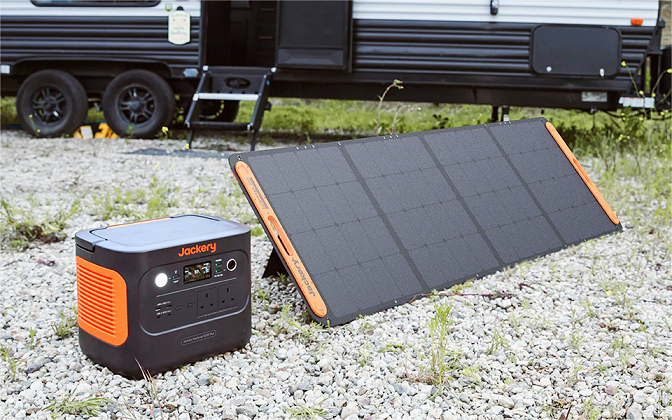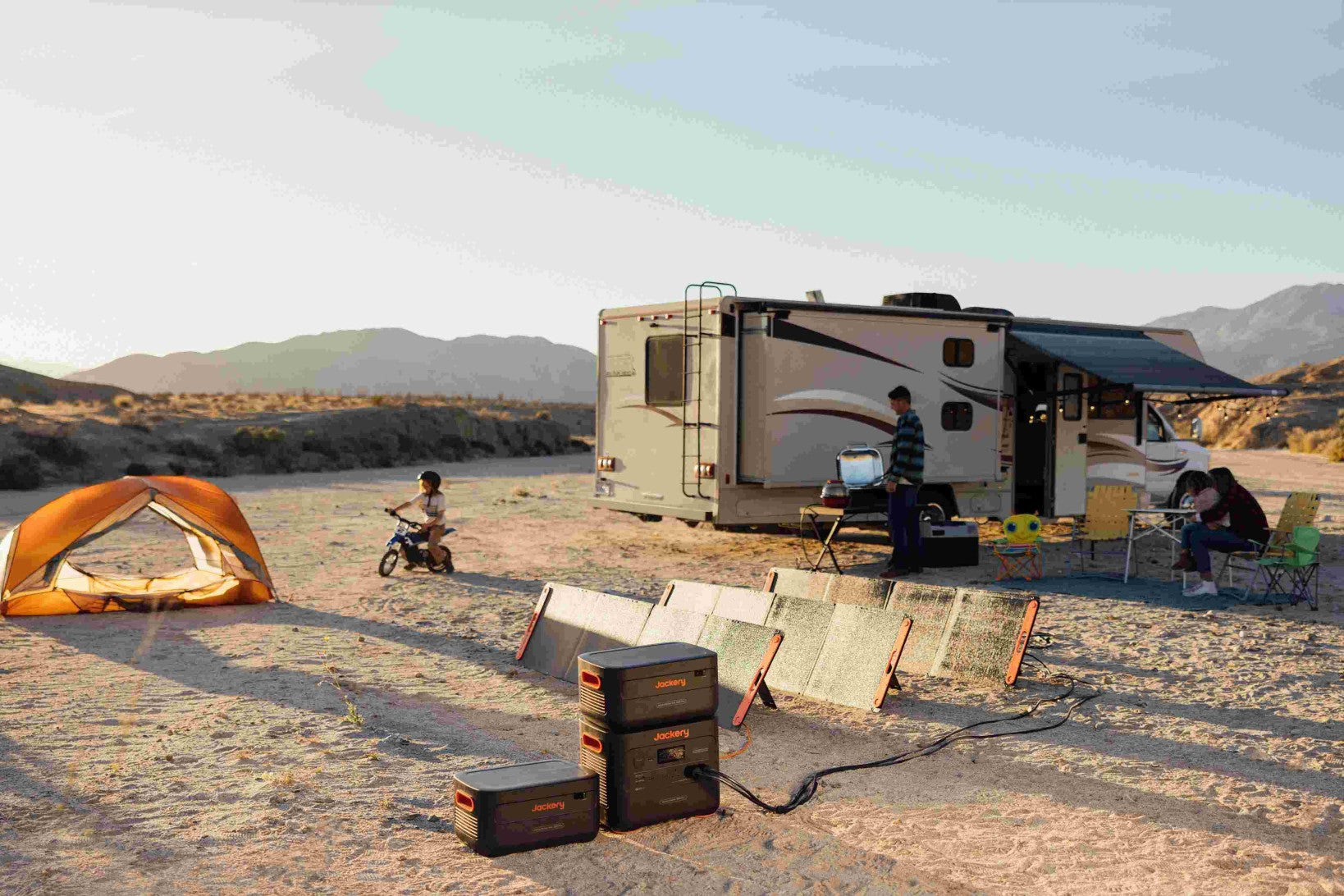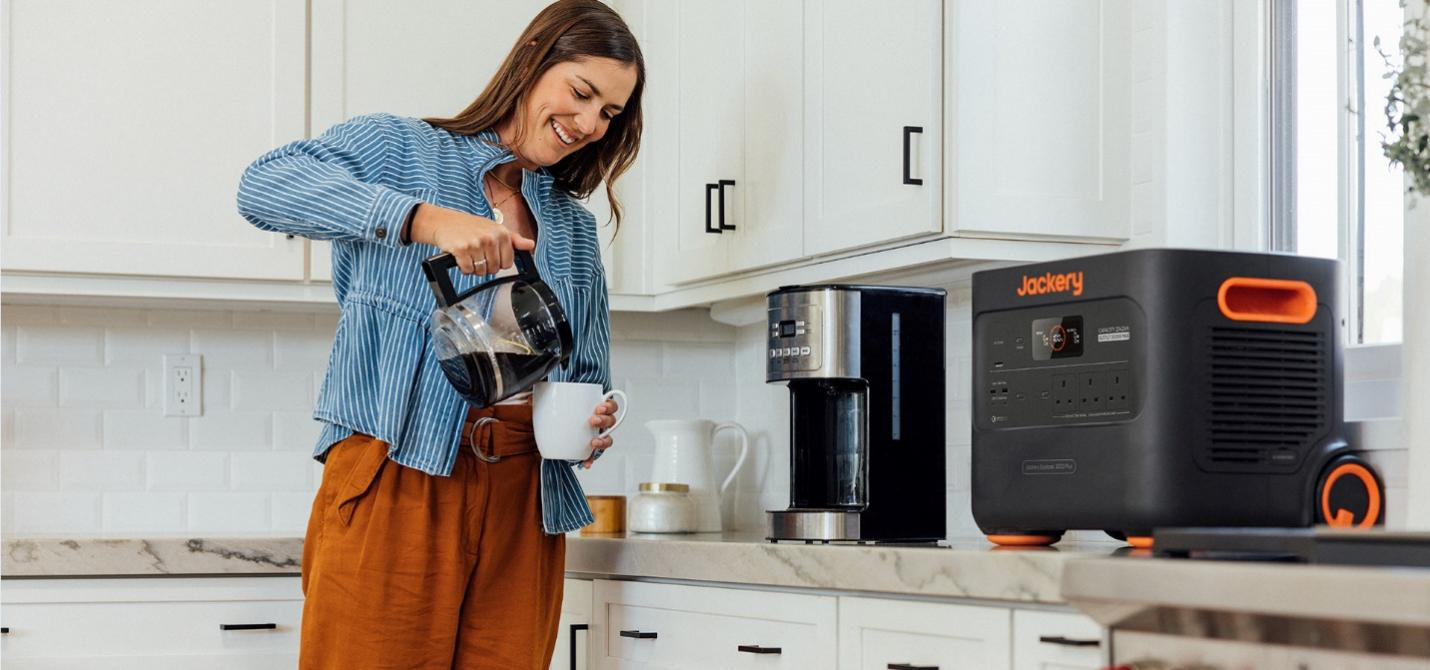Packing for a cruise can be stressful, but with a bit of preparation, it can be easy to add to your vacation plans. It's important to know what to pack for your cruise, whether you're going alone, with family, or as a couple.
This includes clothes for the day, formal attire, toiletries, and other essentials for excursions. To minimise surprises, UK cruisers should also think about what they need for their trip and what they can and can't bring with them.
This complete cruise packing list offers everything you need, including outfit suggestions, must-have accessories, health goods, family essentials, and tips on how to pack your bags. To ensure a fantastic time on your cruise, follow these expert tips to pack light and stay organised.
|
Key Takeaways: |
|
What to Pack for a Cruise? The Essentials for Every Traveller
When you pack for a cruise, it's not the same as when you prepare for a regular vacation. You will sail through various kinds of weather, engage in different activities, and adjust to both casual days and more formal evenings. No matter what the day brings, a smart way to pack will make sure you are comfortable, stylish, and ready. This section covers the basics, including clothes, cruise-specific accessories, toiletries, medications, and more.
Download the Cruise Packing List PDF >>

What Daytime Clothing Should You Bring for a Cruise?
Life on a cruise ship is usually calm and busy during the day. Your clothes need to be versatile, practical, and suited for the weather, whether you're lazing by the pool or going on shore excursions. It's not only about being comfortable; it's also about dressing for the sun and the potential for moving across various types of terrain. The correct clothes for the day will make it easy for you to enjoy every moment.
Comfortable and Practical Clothing
Light, breathable fabrics that keep you cool should be the primary focus of your daytime clothes. Daytime clothes should be helpful, light, and comfortable, and they should be suitable for warm weather and busy days. Consider bringing clothes made of cotton or linen, shorts or casual skirts, and a few long-sleeved shirts to protect you from the sun and wind. You may keep your luggage minimal and your wardrobe selections open by mixing and matching.
Shoes for Daytime Activities
When it comes to exploring, the right shoes make all the difference. For shore excursions, walking shoes or trainers give you grip and support. Around the pool, sandals are great, and on rough beaches, water shoes are beneficial. When you go to the shore, comfortable shoes and sandals will protect your feet and make it simpler to walk long distances.
Sun Protection Clothing and Accessories
It's just as vital to look attractive as it is to protect your skin and eyes from the sun's harmful effects. You must wear wide-brimmed hats and sunglasses that block UV rays. On days when the sun is intense, lightweight clothing that blocks UV rays can also provide an extra layer of protection. Sun hats and sunglasses are essential items to protect against sunburn and eye strain during your vacation.
What Should You Wear for Evenings on a Cruise?
Evenings aboard a ship are usually more upscale, with everything from fancy dining rooms to theatre presentations and cocktail hours. Most cruise lines expect their passengers to dress nicely after dark, but the dress code varies depending on the cruise line and the theme of the night.
Knowing what to wear on a cruise, whether it's innovative casual or formal, will help you feel confident and blend in with the onboard atmosphere. This section explains how to prepare for various potential nighttime events.
Smart Casual Evenings
Most of the time, the dress code for nighttime cruises is smart casual. Men can wear chinos or formal pants paired with a collared shirt or a nice polo, while women can opt for dresses, blouses, or elegant separates. You shouldn't wear clothes that are too casual, like sportswear or beachwear. Many cruise lines have smart casual dress standards for evenings, so it's crucial to bring dressier clothes that can be worn in a variety of ways.
Formal or Gala Nights
Some nights require a touch of glitz, especially on extended cruises or special sailings. Men should wear a complete suit or tuxedo, while women can wear evening gowns, cocktail dresses, or elegant pieces. You may go all out with your accessories and hair on these nights. You should carry at least one formal outfit to formal gala nights, as they typically require more formal attire.
Tips for Packing Evening Wear
Use neutral colours in your ensembles so that you can easily transition from day to night with the right accessories. To keep your clothes looking new, consider fabrics that resist wrinkling, such as jersey or knit. A scarf, a piece of jewellery that makes a statement, or a tie may easily make a simple ensemble look better. When preparing for the evening, select clothing that can be worn in multiple ways.
What Cruise Accessories Might You Overlook but Should Pack?
There are various cruise-specific items, in addition to apparel, that can enhance your trip. People often overlook these minor yet important things until they are needed, and by then, it may be too late.
These extras will help your trip go smoothly from start to finish, from tools for organising your stateroom to gear that makes your daily life easier. These small, vital items are more useful than you might think.
Essential Accessories for Cruise Life
A lanyard is a great way to keep your cruise card or cabin key close to hand. A portable phone charger makes sure your devices stay charged if you're at a port for a long time or out at sea all day. A refillable water bottle is beneficial for the environment and essential for staying hydrated. These simple extras make your cruise much more comfortable and convenient.
Other Useful Accessories
A light daypack or tote is great for bringing things to shore. Binoculars are fantastic for seeing wildlife or beautiful scenery, especially when you're on a cruise through fjords or archipelagos. Laundry detergent enables you to rinse your clothes while you're on the road, which is handy on longer trips. Extra things like umbrellas, earplugs, and power strips can make your vacation more comfortable and easier.
Which Toiletries and Medications Should You Bring on a Cruise?
Basic amenities are typically provided aboard cruise ships, but relying only on them is not always advisable, especially if you have special needs or preferences. Bringing your toiletries not only saves you money but also ensures that you have everything you need to keep clean and comfortable. Having the correct drugs on hand can also help you avoid having to pay for medical care or feel bad on board. This section outlines the personal care items to bring with you.
Essential Toiletries to Pack
Put things like toothbrushes, toothpaste, floss, shampoo, conditioner, and shower gel in your bag. Some ships do have them, but your favourite brands might not be available on board. Don't forget to bring sunscreen, moisturiser, and lip balm. The heat and salt can quickly dry off your skin. Bringing your amenities on your cruise will save you money and make you feel more at home.
Medications and Health Supplies
Always have seasickness medicine on hand, especially if you have a history of motion sickness or plan to sail in choppy waters. Take all of your prescription drugs in their original packaging and a tiny first aid kit. Having paracetamol, ibuprofen, and antihistamines on hand is helpful. Bringing all the necessary medicines will help you stay healthy and comfortable during your trip.
Additional Useful Items to Include in Your Cruise Packing List
Finally, there are a few additional items that may not fit into the usual packing categories but can be pretty helpful. These items, ranging from important documents to modern devices and enjoyable activities, will help you prepare for your trip. Once you're at sea, being organised and planning beforehand can make a big difference. This part ensures you don't forget any of those "why didn't I pack that?" items.
Essential Travel Documents and Money
Please bring your cruise tickets, insurance papers, passport, and any other necessary visas. Keep both paper and digital copies on hand in case of an emergency. You may pay for anything on board and in ports with both cash and cards. Keeping all of your travel documents in order will help you avoid stress and delays.
Technology and Entertainment
You need a smartphone or a camera to take pictures of your voyage memories. Fill up your e-reader or bring a decent book to read when you have some free time. When you're on a plane or deck and things are quiet, headphones can be a helpful addition. Bringing your own entertainment and recording gadgets will make your cruise even better.
Besides, cruise ship cabins, especially on older vessels, are notorious for having a scarcity of power outlets. This can be frustrating when you have multiple devices (phones, tablets, smartwatches, cameras, e-readers, hair tools, CPAP machines) that all need charging. A Jackery provides multiple AC, DC, and USB outputs, simplifying your charging setup.

Being Ready for the Weather
Even in tropical areas, the weather can change swiftly at sea. To avoid being taken off guard, bring a light raincoat or travel umbrella. These things don't take up much space, yet they can make you feel a lot better. Preparing for variations in the weather will keep you dry and comfortable during your trip.
|
Category |
Items |
|
Daytime Clothing |
Lightweight tops, long-sleeved shirts, shorts, skirts, swimwear, cover-ups, sunhat, sunglasses, comfortable walking shoes, sandals |
|
Evening Attire |
Bright casual clothes (chinos, collared shirts, dresses), formal outfit (suit, cocktail dress), casual evening wear (neat jeans, polo shirts) |
|
Accessories |
Lanyard or badge holder, portable phone charger, reusable water bottle, tote bag/backpack, binoculars, travel detergent, umbrella, earplugs, eye mask, power strip |
|
Toiletries |
Toothbrush, toothpaste, floss, shampoo, conditioner, body wash, sunscreen, moisturiser, lip balm, deodorant, razor, shaving cream, hairbrush, makeup, hand sanitiser |
|
Medications |
Seasickness remedies, pain relief, prescription medications, allergy medication, antihistamines, first aid kit, vitamins |
|
Other Essentials |
Passport, visas, travel insurance, cruise tickets, cash, credit/debit cards, camera, books/e-reader, rain jacket/umbrella, portable power |
(*This cruise packing list is only for reference.)
There are more packing lists and checklists you may be interested in:
Jackery Portable Power Station for Cruise Trips
Cabins often feature a combination of US (110V) and European (220V) outlets. While newer ships are introducing more USB connections, you may still need adapters or additional power sources to accommodate your devices. A Jackery Portable Power Station simplifies your charging setup by providing several AC, DC, and USB outlets.
If you're spending a lot of time on deck, by the pool, or in other public areas, a Jackery could provide power for a portable fan, a small speaker (used considerately!), or keep your devices topped up without constantly hunting for an outlet.
While the thought of carrying a Jackery Portable Power Station on a cruise excursion may seem intriguing due to its versatility, it is essential to check the cruise ship's restrictions and safety standards first.
Jackery Explorer 100 Plus
The Jackery Explorer 100 Plus is an excellent choice for a cruise trip, primarily because it addresses two key concerns for travellers: portability and airline/cruise line compliance.

Aviation-Approved Capacity (99.2Wh): This is the most significant advantage. The Explorer 100 Plus has a capacity of 99.2Wh, which is just below the 100Wh limit that most airlines and cruise lines allow for lithium-ion batteries in carry-on luggage. This means you can confidently bring it with you on your flight to the port and then onto the cruise ship without needing special approval or worrying about it being confiscated. (Note: Lithium-ion batteries are generally not allowed in checked baggage due to fire risk, so always carry your power bank on board with you.)
Cruise Line Acceptance: While cruise lines may have slightly varying policies, a power station under 100Wh, such as the Explorer 100 Plus, is almost universally accepted. Larger power stations (especially those with AC outlets) can sometimes be restricted due to concerns about fire hazards or being mistaken for other prohibited devices.
Lightweight and Compact: Weighing only 2.13 lbs (965g) and being palm-sized, the Explorer 100 Plus is incredibly easy to pack. Cruise cabins can be small, and space is often at a premium. This power station won't take up much room in your luggage or on your bedside table.
Dual 100W USB-C PD Output: This is a significant benefit for modern electronics. Most cruise cabins have limited wall outlets, and they are often not conveniently located. The Explorer 100 Plus's powerful USB-C ports can rapidly charge your phones, tablets, cameras, laptops and more.
Safety Is Priority: The Explorer 100 Plus is constructed from UL 94V-0 rated flame-retardant material, possesses Class 9 impact resistance, adheres to UL safety regulations, and is safeguarded against impacts (three drops from 0.9 meters). This device is UL Certified and features high-temperature protection at 60 °C. Furthermore, it incorporates clever dual-chip protection, supplemented by five temperature probes for accurate temperature regulation.
(*The working hours are only for reference; the actual working hours depend on your usage.)
What to Pack for a Cruise Depending on Your Destination?
UK cruisers are very good at ensuring their cruise packing list aligns with the weather, culture, and expectations of each destination. If you're going to see the Northern Lights in Norway or relax in the Mediterranean, knowing what to bring can make or break your trip. You need to consider more than just the weather when getting dressed.
You also need to think about the customs in the area, the activities on the trip, and the dress codes on the ship. This section discusses how to pack for a cruise based on your destination, ensuring UK travellers are prepared for any eventuality.

Packing for Mediterranean Cruises
The Mediterranean is a favourite cruise destination for people from the UK. Spain, Italy, and Greece are all great places to visit, offering hot weather, trendy towns, and easygoing beach life. If you want to stay cool under the Mediterranean sun, opt for lightweight clothing, such as linen shirts, sundresses, and cotton shorts.
When you go to churches and other holy places, you should also wear modest clothes. A scarf or long-sleeved blouse will do the trick. Because the UV levels are so high in this area, it's essential to protect yourself from the sun with high-SPF sunscreen, a wide-brimmed hat, and sunglasses.
Many Mediterranean cruises tend to favour a more stylish and slightly formal evening attire, especially in European destinations. Men should bring nice shirts and pants, while women can bring nice blouses and gowns.
Jewellery, scarves, and belts are all fashionable accessories that can enhance your clothing without making it too heavy. When you go to the Mediterranean at night, you should wear stylish but practical clothes. Layering is vital for breezy coastal nights.
Packing for a Northern Europe or Baltic Cruise
UK visitors who want to escape the heat and see some history generally choose cruises to Northern Europe or the Baltic region. When packing for Northern Europe, be prepared for weather that can change quickly.
Layers are pretty important. You should pack thick sweaters, rainproof coats, and pants suitable for rainy or chilly weather. Don't forget to bring a hat, gloves and scarves, especially in the spring or autumn.
Waterproof boots or shoes are great for walking on cobblestones and going on nature walks. If your cruise visits Scandinavian countries or St. Petersburg, you may have to walk a lot, so comfort is essential. Evenings still have dress codes on cruises, but you need a warm wrap or jacket to go outside on deck. Travelling to Northern Europe requires gear that can handle changing weather and layers that are useful.
Packing for Norwegian Fjords Cruises
It is crucial to plan and determine what to bring on a Norwegian Fjords cruise, as the weather can change rapidly, especially in the highlands. Thermal layers and base gear that wick away moisture are essential because temperatures can change significantly from day to night. A solid waterproof outer layer is vital not just for rain, but also for boat journeys in the fog and trips to glaciers. Shoes should be strong and able to withstand the weather.
The atmosphere on board is still informal, but it tends towards cruise smart casual standards, so bring structured shirts, sweaters and wool pants. When you see glaciers or waterfalls from the deck, it's more fun to wear gloves, wool socks, and a thick cap. Don't forget your binoculars for spotting animals. People sometimes forget these, but they can be pretty helpful. Travellers from the UK who want to see the fjords should pack for cold, wet weather and yet look great at night.
Packing for Caribbean or Transatlantic Cruises
If you're going to a warm, tropical place like the Caribbean or on a transatlantic cruise from the UK to the Americas, you don't need to pack much. When it's hot and humid, wear clothes that allow air to flow through, such as cotton tops, swimwear, and sarongs, and apply sunscreen that works well for your skin type.
Having more than one swimsuit is excellent for frequent use at the pool and beach, and in some island nations, reef-safe sunscreen is required. Don't forget to bring bug spray, especially if you're going out at night or on a tropical nature tour.
Men can wear collared short-sleeved shirts, while women can wear sundresses or maxi dresses. Evening clothing can be kept light and airy. For evenings and dinners by the beach, sandals or espadrilles are great. Lightweight cardigans or wraps can help when the temperature drops suddenly inside or when the wind blows in the evening. Caribbean cruises demand effortless style—cool, breathable fabrics and shoes that work well in the tropics are a must.
Packing for a UK Coastal Cruise
When you pack for a cruise around the UK's coast, you need to be ready for changing weather, like sunlight one minute and rain the next. When visiting ports like Edinburgh, Liverpool, or the Channel Islands, it's best to wear waterproof coats, windproof layers, and sturdy shoes. It's essential to wear layers. Start with thermal tops and finish with a raincoat that fits comfortably in a day bag. A small umbrella and shoes that won't get wet will be helpful.
Even in the summer, the temperature can drop at night, so you should bring long trousers, cardigans or wraps on your evening cruise. When you go on a cruise in the UK, you might see a mix of informal and formal styles, such as countryside chic or classy pub dinner style.
Don't forget to bring binoculars so you can see coastal features and sea life from the deck. Packing for UK cruises is essential, as you should always be prepared for wind, rain, and sudden cold.
|
Cruise Destination |
Daywear Items |
Evening Attire |
Essentials |
|
Mediterranean |
Lightweight clothing, sandals, sunhat, modest wear for churches |
Chic dresses, collared shirts, smart trousers |
Sunglasses, high-SPF sunscreen, scarf, fashionable accessories |
|
Northern Europe/Baltic |
Warm jumpers, waterproof jacket, gloves, layers |
Smart casual with jackets or wraps |
Walking shoes, thermal tops, compact umbrella |
|
Norwegian Fjords |
Thermal base layers, raincoat, hat, gloves |
Knitwear, wool trousers, collared tops |
Binoculars, waterproof boots, and insulated socks |
|
Caribbean/Transatlantic |
Swimwear, sarongs, shorts, cotton shirts |
Breezy dresses, linen trousers, short-sleeved shirts |
Insect repellent, reef-safe sunscreen, and sandals |
|
UK Coastal Cruise |
Waterproof jacket, fleece layers, windproof top, waterproof shoes |
Casual chic: cardigans, smart jeans, knitwear |
Compact umbrella, binoculars, daypack |
What Not to Pack for a Cruise, and What's Banned?
It's just as important to know what not to pack as it is to know what to pack when making your cruise packing list. To keep passengers safe, comfortable, and in compliance with international laws, most cruise lines have strict rules regarding what items are prohibited and which products are permitted.
If you bring anything that isn't allowed, it may be taken away, you may have to wait longer to board, or you may not be allowed to board at all. UK sailors can save extra trouble and have a smooth holiday by knowing what they can't bring and what typical packing blunders to avoid.

Are There Items Banned on All Cruise Lines?
Most cruise lines have a standard list of things that are not allowed on board to keep guests and staff safe. These often include irons, kettles, coffee makers, candles, and any other equipment that has open flames or heating elements because they are very dangerous when it comes to fires. Many cruise lines also prohibit the use of power strips, instead allowing only USB power hubs or extension cords that the cruise line has approved. It is also against the rules to possess any form of weapon, including knives, martial arts gear, or toy guns.
Other things that might be banned include hoverboards, drones, and bikes, which are often seen as safety or logistical issues on board. Royal Caribbean does not allow scissors with blades longer than 4 inches or handcuffs because they are dangerous.
Before you pack, be sure to check your cruise line's list of prohibited items that are not allowed on board. Different companies may have somewhat different rules. If you don't follow these rules, security personnel may confiscate your belongings, and you may experience longer wait times at checkpoints.
What Personal Appliances and Electronics Should You Leave at Home?
Many travellers believe they can bring their appliances to make their cabin feel like home; however, most small electrical items aren't allowed. Most of the time, you cannot obtain travel irons, garment steamers, or hot plates, as they can cause electrical problems or fires.
Straighteners and curling irons are also frequently only allowed while someone is watching them and should never be left alone. Most of the time, kettles and coffee makers are not allowed; however, ships may occasionally permit the use of hot water stations or kettles for medical reasons, provided permission is obtained first.
You need to inform the cruise line in advance if you plan to bring medical devices, such as CPAP machines. They also have to meet safety regulations. Passengers are advised to use the ship's amenities instead of getting their appliances, as these may not be compatible with the ship's power systems. If you bring electrical gadgets that aren't allowed, they may be confiscated and even destroyed.
Can You Bring Your Alcohol or Beverages?
One of the rules regarding packing for a cruise that people get wrong the most is about alcohol. Most cruise lines have tight rules about carrying alcohol on board. They may only accept certain types or amounts. Royal Caribbean, for example, allows each adult passenger to bring one 750ml bottle of wine in their carry-on luggage, but spirits and beer are not permitted and will be confiscated. Saga Cruises and other lines don't let anyone bring alcohol on board for any reason.
If you try to smuggle alcohol through security or include it in your checked luggage, it could take longer, and the alcohol could be thrown away. Sometimes, you can't bring as much juice or water as you like, and it has to stay sealed in your carry-on bag. Before you pack, check your cruise line's alcohol policy to ensure you don't get disappointed and that you follow security regulations.
What Clothing Items Should You Avoid Packing?
Even while cruise dress standards are usually relatively relaxed, there are some clothes you shouldn't wear. In dining rooms and other public places, clothing and swimwear that reveal too much skin or lack proper cover-ups are often not permitted. When sailing to destinations like the Caribbean or Central America, it's also a good idea to avoid wearing camouflage apparel, as it may not be permitted in some areas.
Cruise lines have dress codes that prohibit wearing clothes with rude images or language. If you do, you can be asked to alter or cover up. Heavy coats and multiple pairs of shoes can occupy a significant amount of space in your luggage, making it more challenging to pack. Choose clothes that are comfortable and can be worn during the day and at night on the cruise.
Are There Food Restrictions for Cruise Travel?
It may seem easy to bring your food, but many cruise companies have strict rules about this. Fresh fruit, cooked meats, dairy, and handmade meals are nearly always not allowed because they can spoil quickly and are bad for your health. Passengers are usually only allowed to bring modest amounts of factory-sealed, pre-packaged snacks, such as cereal bars or chips. These snacks must be disclosed when they board and kept in their hand luggage.
It is crucial to realise that many cruise ports have strict customs regulations that make it unlawful to bring in food from other countries. If you do, you may be punished or forced to dispose of it by local authorities. If you have food allergies or other dietary requirements, please notify your cruise line in advance to ensure a seamless experience. Most will make concessions or let you bring authorised food items in certain situations. Before consuming any food, ensure you verify the food rules for both the cruise company and the destination.
|
Item Category |
Examples of Prohibited or Discouraged Items |
Reason Not Allowed |
|
Fire Hazards |
Irons, kettles, hot plates, candles, surge-protected power strips |
Fire safety regulations |
|
Weapons and Replicas |
Knives, toy guns, martial arts gear, handcuffs |
Safety and security risks |
|
Alcohol and Drinks |
Beer, spirits, large quantities of wine, refillable, unmarked bottles |
Cruise alcohol policy, customs laws |
|
Personal Appliances |
Steamers, coffee makers, and high-powered electronics without approval |
Interference with the ship's power systems |
|
Inappropriate Clothing |
Camouflage items (in some countries), offensive slogans, and swimwear indoors |
Dress code rules and destination restrictions |
|
Prohibited Foods |
Homemade meals, dairy, fruit, and cooked meats |
Health, safety, and customs laws |
Cruise Luggage and Packing Tips
To have a pleasant and stress-free trip, you need to pick the correct luggage and learn how to pack it well. Following cruise company rules, keeping your things safe, and being organised are all made easier by using the right luggage.

What Type of Luggage Works Best for Cruises?
The first step to easy packing is to choose the right luggage. We highly recommend lightweight, robust suitcases or soft-sided bags with wheels, as they are easier to manoeuvre in airports, ports, and ship corridors. Bags that fit in the carry-on can be pretty helpful for shorter voyages or as extra luggage for day trips and excursions. Soft-sided bags and backpacks can fit better in small cabin storage spaces and are easier to access during the cruise.
When you leave the cruise, consider bringing bags with zippers that can be locked or luggage with locks that the TSA approves. Many UK cruisers prefer luggage with multiple compartments and external pockets, allowing them to pack more efficiently. Waterproof or water-resistant luggage coverings can keep your bags safe from spills or unexpected rain when you board or go on shore excursions.
How to Pack Efficiently and Maximise Space?
Packing efficiently can help you conserve space and make your luggage lighter, which makes it easier to carry. Rolling clothing instead of folding it helps prevent wrinkles and provides more space in your luggage or bag.
Using packing cubes or compression bags can help you organise your things even more, making it easier to find what you need without having to unpack everything. Organising outfits for daytime, evening, and excursions into distinct cubes makes your daily routine on board easier.
To keep the load balanced and prevent lighter items from becoming crushed, place heavier objects, such as shoes and toiletries, near the bottom of the luggage. To reduce the amount of luggage and follow airline rules about liquids, consider bringing travel-sized toiletries. If you want, you can also bring full-sized toiletries in your checked baggage. Always allow some room for anything you might buy or mementoes throughout your voyage.
What Are the Tips for Carry-On and Cabin Luggage?
In your carry-on or cabin bags, pack anything you might need right away after boarding or during your travel. This includes your medications, travel documents, valuables, a change of clothes, and basic toiletries. It's essential to keep your cruise card and ID in your carry-on bag, as many cruise lines require these documents to be on hand. A lightweight day bag or backpack for trips is easy to store and can be used every day.
FAQs
The following are the frequently asked questions about busking in Covent Garden:
1. How many outfits should I pack for a seven-day cruise?
For a seven-day cruise, it is best to bring seven to nine daytime outfits, one every day, plus a couple of extras for flexibility. Prepare two to three sophisticated, casual, or dressy outfits for dinners and special occasions, depending on the cruise's dress code.
Swimwear and activewear for excursions should be packed, as well as a few layering garments such as cardigans or light jackets. UK travel publications recommend combining adequate clothing with the option of using onboard laundry services, which helps reduce luggage weight without compromising variety.
2. What toiletries should you pack for a cruise?
When preparing for a cruise, consider packing travel-sized products such as shampoo, conditioner, body wash, toothpaste, deodorant, and sunscreen. Include any prescription drugs, skincare products, or personal hygiene goods that you use daily.
Some ship cabins include basic toiletries, but many passengers prefer their own brands and specialised things. According to UK sources, when travelling with liquids in hand luggage, pack them in containers that are 100ml or smaller to comply with airline security restrictions, and opt for eco-friendly products for sustainability.
3. Can I bring full-size shampoo on a cruise?
Bringing full-size shampoo on a cruise is usually permitted in checked luggage, but is frequently limited in carry-on bags due to airline liquid regulations that limit containers to 100ml. Many sailors prefer to bring travel-sized shampoo bottles for convenience and ease of use.
However, some cruise companies offer complimentary toiletries, so a full-size shampoo is not always required. To avoid problems, UK travellers should verify the toiletry policies of both airlines and cruise lines and prepare appropriately.
Final Thoughts
A good cruise packing list is the key to a successful vacation. It ensures you have everything you need and don't bring too much or items that aren't allowed. UK travellers can easily get around on both the ship and on shore excursions if they choose clothing, accessories, and health supplies that can be used in many different ways. Before you go, make sure to read the rules of your cruise company and the necessities of your destination. With this detailed packing advice, your cruise will go well, and you'll be able to focus on generating great memories at sea.

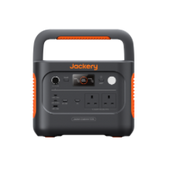
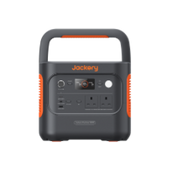

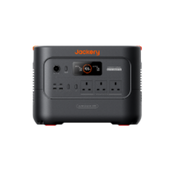

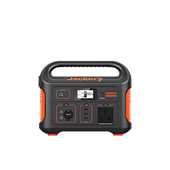

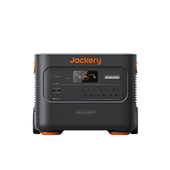
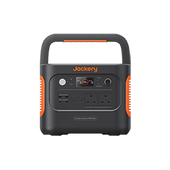
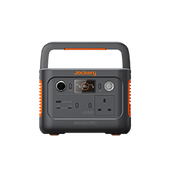
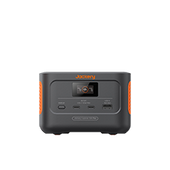
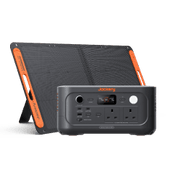
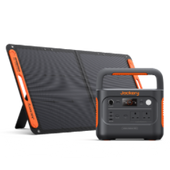
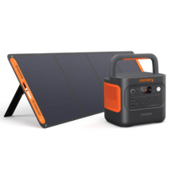
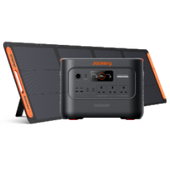
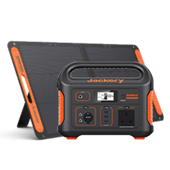

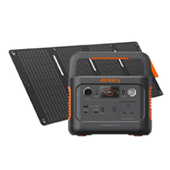
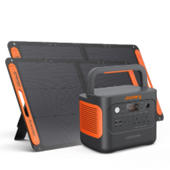
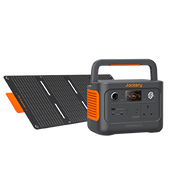
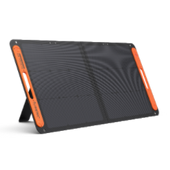




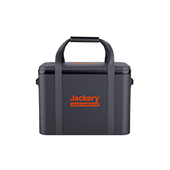
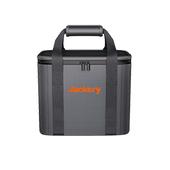
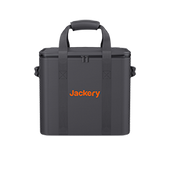

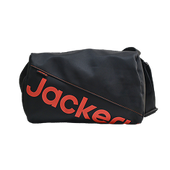

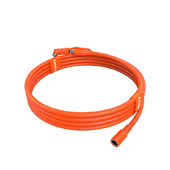
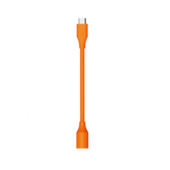
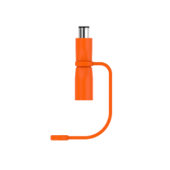


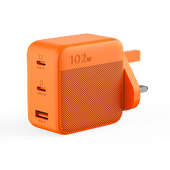

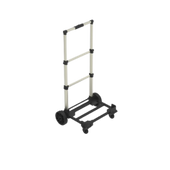



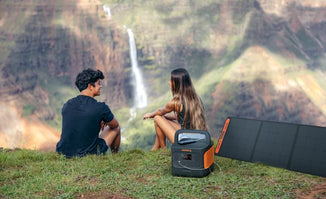







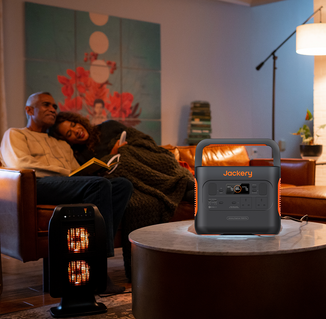









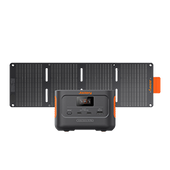

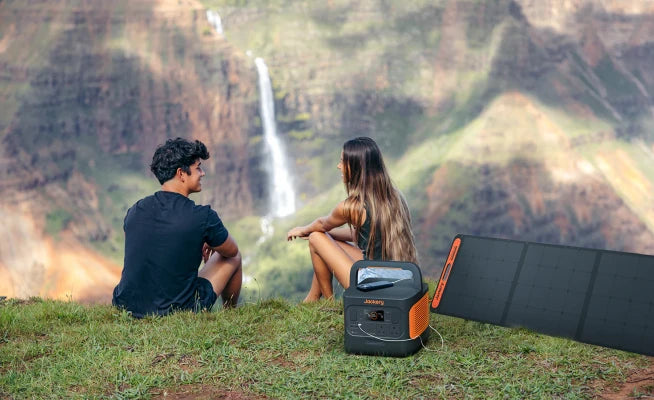
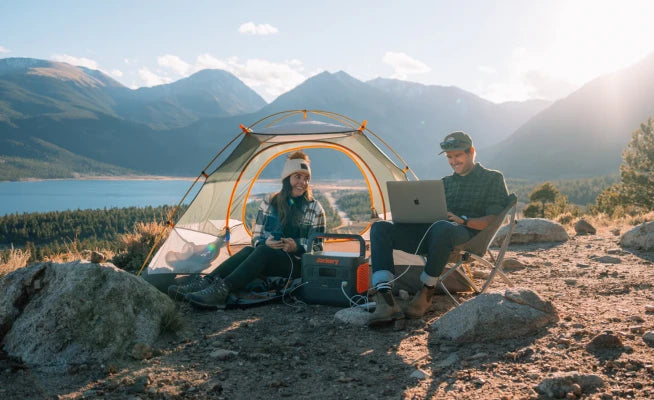





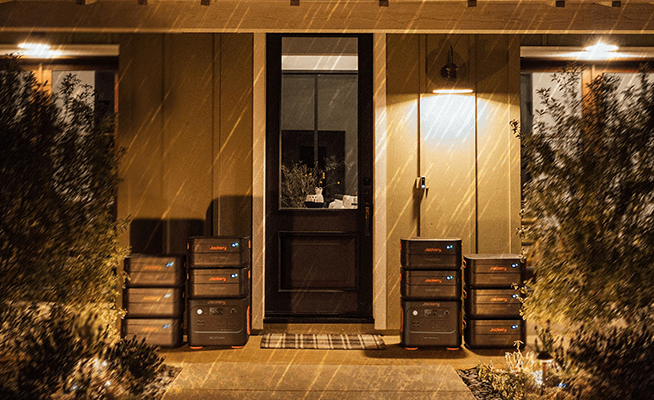
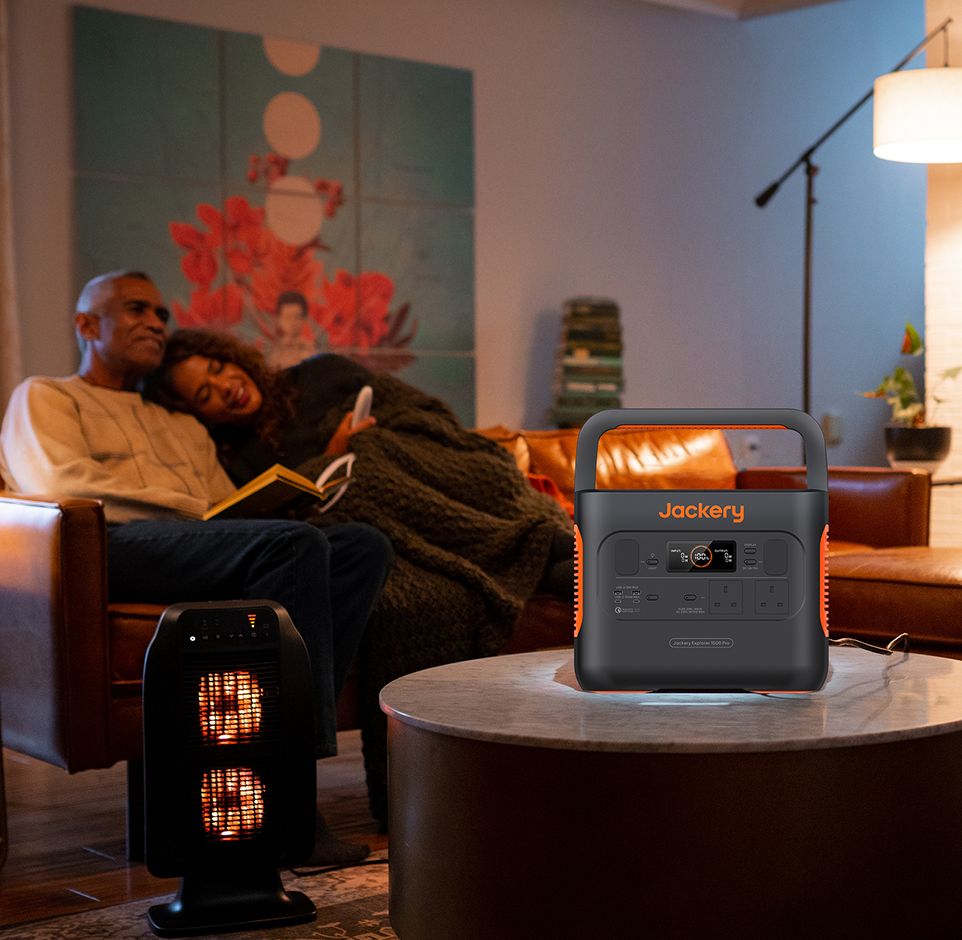








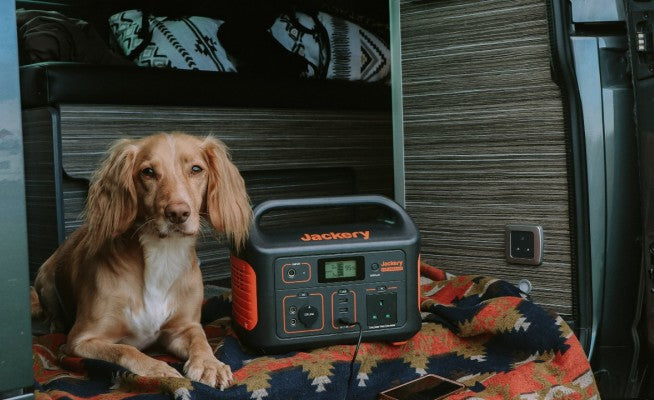






![Ultimate Guide to Cruise Packing List [PDF Download]](http://uk.jackery.com/cdn/shop/articles/cruise_packing_list_guide_af134d82-c549-4bd0-81c8-e70cb82a6726.png?v=1754893069)




